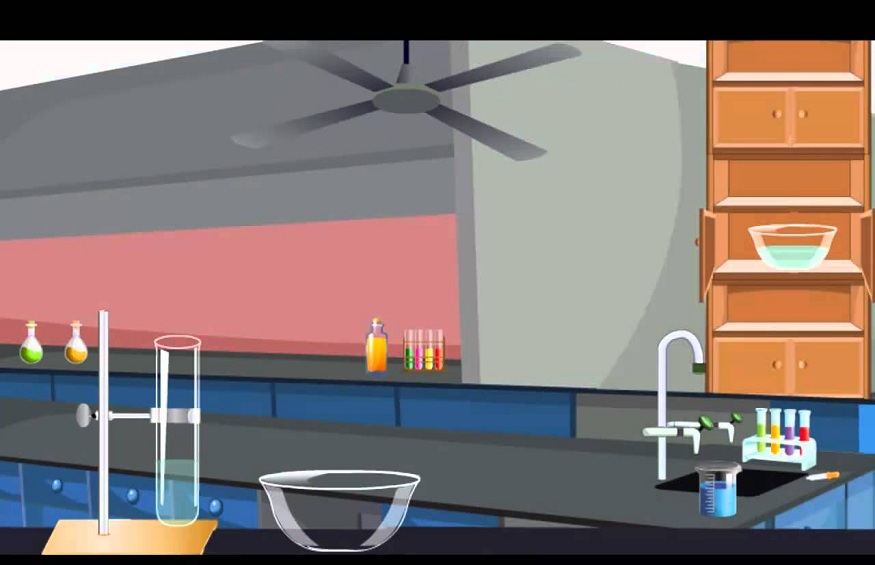
Evaporation is a surface phenomenon in which any liquid can release its molecules into the air by utilising ambient or internal heat. The temperature of the fluid determines the rate of evaporation. When the temperature goes up, the rate of evaporation increases. Even though the liquid’s temperature is the same as the ambient temperature, it will nevertheless release molecules into the air.
It is a natural process in which a liquid transitions from its liquid state to its vapour state by soaking the heat content of the liquid from the surface. This process can be continued without the need for external heat. It simply indicates that evaporation occurs at any temperature. In this article, we will discuss what is evaporation and its rate-determining factors.
Evaporation
Evaporation is the process of turning water from a liquid to a gas or vapour. While the water boils at 100 degrees Celsius, it evaporates slowly at 0 degrees Celsius. As the temperature rises, the rate of evaporation increases as well.
Evaporation Examples
We’ll use two instances to further comprehend evaporation, one from the weather and another from our everyday lives.
In weather, you can look at the rain cycle to have a better understanding of how this process works. The water on the Earth’s surface evaporates and rises into the atmosphere, which is considerably cooler. After that, the vapour condenses back into water droplets due to the reduced temperatures.
Our bodies dry out as we get out of the bath due to this process alone. To test it out, let a glass of water out in the air for a few minutes; you’ll observe the water level gradually decrease. Water evaporating into the air is a very typical occurrence.
Factors Affecting Evaporation
Temperature: The faster the evaporation rate, the higher the temperature of the liquid and its surroundings.
As evaporation is a surface process, the more the surface area the liquid occupies, the faster it evaporates.
The humidity of the environment: The slower the evaporation rate, the higher the humidity of the atmosphere surrounding the water.
The presence of a breeze or another source of air movement relates directly to the rate of evaporation.
Temperature
The evaporation rate from a liquid’s surface is determined mainly by its temperature. We all know that the quantity of heat present in a liquid is determined by its temperature. The kinetic energy of the liquid molecules is determined by heat. This energy is utilised to dispel intermolecular interactions that bind molecules together. When the temperature rises, the heat increases, giving the molecules more kinetic energy. It means that surface molecules will have tremendous energy to break free from intermolecular interactions and form vapour. This is the most essential of the evaporation-related parameters.
Humidity
The ambient temperature determines the amount of water vapour that air can hold. It simply means that warmer air may transport more water vapour than colder air. As a result, the amount of moisture in the air determines how much more water vapour it can hold at a given temperature. The rate of evaporation will be slower as the humidity rises. If you think of a summer day, you’ll notice that wet garments dry faster. On the other side, garments take longer to dry on a rainy day due to the higher humidity.
Surface area
Evaporation is a surface phenomenon, which occurs only on the liquid’s surface. During evaporation, the molecules at the liquid’s surface overcome intermolecular forces of attraction to break away from the liquid and exit as a gas into the atmosphere (or vapour).
Additional information
Bulk property and surface phenomenon
As we all know and previously mentioned, evaporation is a surface phenomenon. When it comes to the bulk phenomenon, we have an example of viscosity. The tendency of a fluid to resist any change in shape or motion is the definition of viscosity. At a temperature of 20 degrees Celsius, the viscosity of water is around 0.01 poise or 10-3 Pa.s (Pascal seconds).
It is a measurement of a fluid’s internal forces. When a layer of liquid is moved across a surface or another layer of the same liquid, the fluid particles tend to resist the movement; this resisting force is viscosity.
Summary
Evaporation is turning water from a liquid into a gas or vapour. Water boils at 212°F (100°C), yet it begins to evaporate at 32°F (0°C); it just takes a long time. Temperature increases, the rate of evaporation increases.
The temperature and the amount of water that has to be evaporated influence the amount of water that evaporates.

 Difference Between a Savings Account & Current Account
Difference Between a Savings Account & Current Account  How Loan Terms Differ Between Car Loans and Motorcycle Loans
How Loan Terms Differ Between Car Loans and Motorcycle Loans  Growing Small Businesses with Virtual Assistant Services
Growing Small Businesses with Virtual Assistant Services  How to Find the Right Engagement Ring Style for You at Lily Arkwright
How to Find the Right Engagement Ring Style for You at Lily Arkwright 


